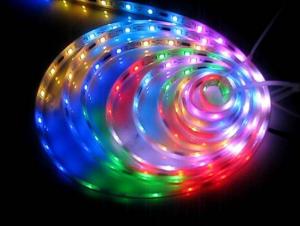Inside Solar Inverter
Inside Solar Inverter Related Searches
100w Solar Panel With Inverter Best Solar Panel Inverter 5000 Series Cast Aluminum Plate Portable Solar Panel Inverter First Solar Series 6 Module 12 Volt Solar Panel Inverter Plastic Solar Lanterns Buy Solar Panel Inverter Solar Panel Inverter Cost Solar Panel Without InverterHot Searches
Type Of Inverter For Solar Types Of Inverter For Solar Used Solar Inverter For Sale Inverter Size For Solar System Solar Edge Inverter For Sale 5kw Solar Inverter For Sale Solar Inverter For Sale Solar Inverter For Battery Solar Inverter For Split Ac Solar Inverter For Laptop Solar Inverter For Fridge Solar With Inverter Price Solar Inverter With 2 Battery Solar Inverter Price In China Best Solar Inverter In China Solar Inverter Price In Dubai Solar Inverter Price In Uae Solar Inverter Price In Kenya Solar Inverter Price In Kerala Solar Hot Water Collectors For SaleInside Solar Inverter Supplier & Manufacturer from China
Okorder.com is a professional Inside Solar Inverter supplier & manufacturer, offers integrated one-stop services including real-time quoting and online cargo tracking. We are funded by CNBM Group, a Fortune 500 enterprise and the largest Inside Solar Inverter firm in China.Hot Products
FAQ
- A solar inverter can be installed both indoors and outdoors, depending on the specific requirements and preferences of the installation. However, it is essential to consider factors such as available space, ventilation, temperature regulation, and protection from environmental elements when deciding on the installation location.
- The maximum temperature range for a solar inverter typically varies between -25°C to 60°C (-13°F to 140°F).
- The power factor affects the performance of a solar inverter by determining the efficiency and quality of the electrical power being generated. A low power factor can lead to increased losses, reduced power output, and decreased overall system efficiency. It can also cause voltage fluctuations and increased stress on the inverter components. On the other hand, a high power factor ensures optimal utilization of power, improves system performance, and reduces energy wastage. Therefore, maintaining a high power factor is crucial for maximizing the performance and reliability of a solar inverter.
- To calculate the efficiency loss due to temperature for a solar inverter, you need to consider the temperature coefficient of the inverter. The temperature coefficient represents the percentage decrease in efficiency for every degree Celsius increase in temperature. By multiplying the temperature coefficient with the temperature difference from the inverter's rated temperature, you can estimate the efficiency loss. For example, if the temperature coefficient is 0.5% per degree Celsius and the temperature increase is 10 degrees Celsius, the efficiency loss would be 5%.
- A solar inverter plays a crucial role in the overall system reliability of a solar power system. It converts the direct current (DC) generated by solar panels into alternating current (AC) that can be used to power homes and businesses. By efficiently managing the power output and ensuring proper voltage levels, a solar inverter helps maintain the stability and reliability of the system. It also includes protective features that safeguard the system from potential issues like overvoltage, overcurrent, and short circuits. Therefore, a high-quality solar inverter positively impacts the overall system reliability by ensuring optimal performance and protecting against potential faults or failures.
- The size of a solar inverter is determined by several factors, including the total capacity of the solar panels, the maximum power output of the panels, the desired efficiency of the system, and the specific requirements of the electrical grid or the building where the inverter will be installed.
- A solar inverter handles grid faults or disturbances by constantly monitoring the grid voltage and frequency. When a fault or disturbance is detected, the solar inverter will disconnect from the grid within a few milliseconds to ensure the safety and stability of the system. It will then enter a standby mode until the grid fault is resolved. Once the grid is back to normal, the solar inverter will reconnect and resume normal operation, providing power to the grid and maintaining synchronization.
- Yes, solar inverters can be used in locations with high humidity or extreme temperatures. However, it is important to choose an inverter specifically designed for such conditions. High-quality inverters are built to withstand these environmental factors and often have protection features to ensure reliable performance and longevity in harsh climates.















































